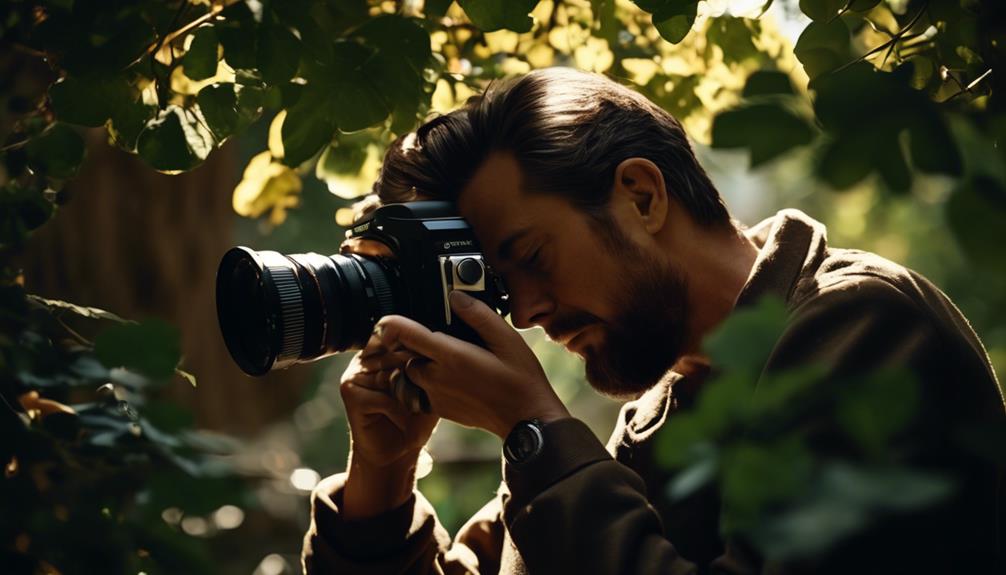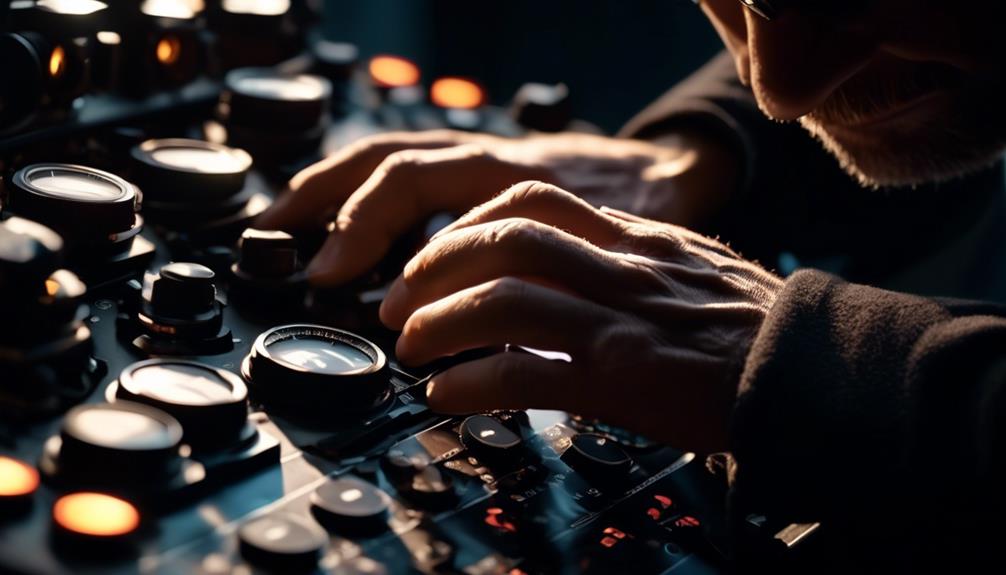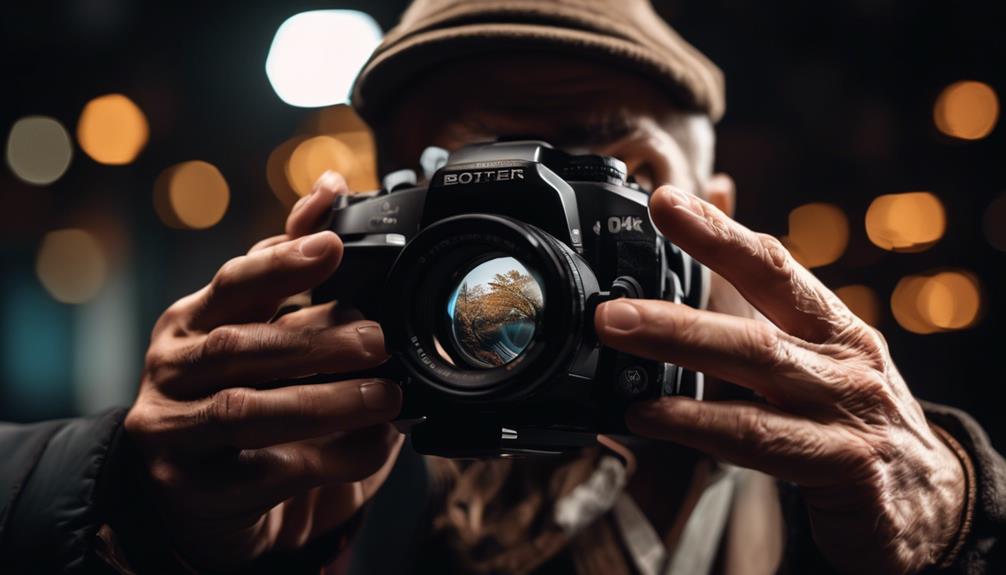Please note this post may contain affiliate links picked by me (Jay) that I have deemed may be of interest or relevant to you the reader of this.
These links do not affect the cost of the thing if you decide to purchase but i may get a little money if you choose to purchase.
For more information on my affiliate link policy click here.
Have you ever wondered what secrets lie behind the mastery of manual mode photography? As a photographer, I've always been intrigued by the notion that there might be hidden techniques to enhance my skills and elevate my art.
Well, I'm here to tell you that there are indeed secrets to uncover, and they can make all the difference in capturing stunning images. From understanding the exposure triangle to harnessing the power of RAW format, these secrets hold the key to unlocking your full creative potential.
So, join me on this journey as we explore the secrets that will transform your photography and take it to new heights.
Key Takeaways
- Understanding the exposure triangle of aperture, shutter speed, and ISO is crucial for achieving proper exposure in any situation.
- Metering modes and exposure compensation help evaluate lighting conditions and make necessary adjustments for perfect exposure.
- Shooting in RAW format provides greater flexibility and control during post-processing, allowing for adjustments to white balance, exposure, and tonal balance.
- Manual focus gives photographers precise control over the focus point, allowing for intentional creative effects and greater control over the final result.
Understanding Exposure Triangle
Why is understanding the exposure triangle essential for mastering manual mode photography?
Well, let me share with you the secrets that elevate your skills in capturing stunning images. The exposure triangle is the foundation of manual mode photography, and it consists of three essential elements: aperture, shutter speed, and ISO. By comprehending how these three elements work together, you can effectively balance light and achieve proper exposure in any situation.
When it comes to balancing light, techniques for achieving proper exposure are crucial. Aperture, which controls the amount of light entering the camera, plays a vital role in this process. By adjusting the aperture, you can control the depth of field, allowing you to create stunning bokeh or capture sharp landscapes.
Shutter speed, on the other hand, determines the duration of time the camera shutter remains open. A faster shutter speed freezes motion, while a slower speed creates a sense of motion blur. Understanding how to manipulate these settings allows you to capture dynamic and visually engaging images.
Overcoming challenges, such as dealing with low light situations, can be daunting for photographers. However, with a solid understanding of the exposure triangle, you can confidently navigate through these obstacles. Increasing the ISO sensitivity allows you to capture images in darker environments, but it may introduce noise to your photos. By balancing the aperture and shutter speed accordingly, you can minimize noise while still achieving proper exposure.
Mastering ISO, Aperture, and Shutter Speed
Mastering ISO, aperture, and shutter speed is the key to unlocking the full potential of manual mode photography. Balancing natural light and utilizing depth of field are two essential techniques that can greatly enhance the quality and impact of your photographs.
When it comes to balancing natural light, understanding how ISO, aperture, and shutter speed work together is crucial. ISO determines the sensitivity of your camera's sensor to light. In low light situations, you may need to increase your ISO to capture enough light, but be cautious as higher ISO can introduce noise into your images.
Aperture, on the other hand, controls the amount of light that enters the camera through the lens. A wider aperture (lower f-stop number) allows more light in, while a narrower aperture (higher f-stop number) reduces the amount of light.
Lastly, shutter speed determines the duration for which the camera's sensor is exposed to light. A faster shutter speed freezes motion, while a slower shutter speed captures motion blur.
Utilizing depth of field is another powerful tool in manual mode photography. It refers to the area of the image that appears in sharp focus. By adjusting your aperture, you can control the depth of field and create different effects. A wide aperture (low f-stop number) creates a shallow depth of field, blurring the background and making the subject stand out. On the other hand, a narrow aperture (high f-stop number) creates a deep depth of field, where both the foreground and background are in focus.
Mastering ISO, aperture, and shutter speed gives you the freedom to capture images in any lighting condition and create stunning visual effects through depth of field. By experimenting and understanding the relationship between these three settings, you can elevate your manual mode photography skills and unleash your creativity.
Using Metering Modes for Perfect Exposure
To achieve perfect exposure in your manual mode photography, understanding and utilizing the different metering modes of your camera is essential. Metering modes help you evaluate the lighting conditions and make the necessary adjustments to capture stunning photographs.
Here are three metering modes that can take your photography skills to the next level:
- Spot Metering: This mode measures the light intensity in a small, specific area of your frame. It's perfect for situations where you want to expose for a specific subject or element within your composition. By using spot metering, you can ensure that your subject is perfectly exposed, even if the overall scene is too bright or too dark.
- Center-Weighted Average Metering: In this mode, the camera evaluates the light in the entire frame but gives more emphasis to the center. It's great for portraits or situations where your subject is centered. By using center-weighted average metering, you can ensure that your subject is well-exposed while still considering the overall lighting conditions.
- Evaluative Metering: This mode divides the frame into multiple zones and evaluates the light in each zone. It takes into account various elements such as brightness, contrast, and color to determine the optimal exposure. Evaluative metering is versatile and works well in most situations, making it a popular choice for many photographers.
Once you've selected the appropriate metering mode for your scene, you can further refine the exposure by using exposure compensation. This feature allows you to adjust the overall exposure by making it brighter or darker. By using exposure compensation in conjunction with the metering modes, you can have full control over the exposure of your photographs.
With a solid understanding of metering modes and exposure compensation, you'll be able to capture perfectly exposed images that showcase your creativity and innovation. So, don't be afraid to experiment and push the boundaries of your manual mode photography skills.
Harnessing the Power of RAW Format
Harnessing the power of RAW format allows photographers to capture and preserve the highest quality of image data, providing greater flexibility and control during post-processing. When shooting in RAW, the camera records all the information from the sensor without any compression or processing. This means that every detail, every nuance of light and color is saved, giving you the ability to make precise adjustments during post-processing.
One of the advantages of shooting in RAW is the ability to fine-tune white balance techniques. White balance is crucial for achieving accurate and natural-looking colors in your photographs. With RAW files, you have the freedom to adjust the white balance in post-processing, even if you didn't get it right in-camera. This flexibility is especially useful when shooting in challenging lighting conditions, such as mixed lighting or artificial light sources.
Post-processing tips for RAW files can significantly enhance the final image. Since RAW files contain more data, you have more room to correct exposure, adjust shadows and highlights, and fine-tune the overall tonal balance. Additionally, RAW files allow for non-destructive editing, meaning you can experiment with different settings without permanently altering the original image. This gives you the freedom to explore your creativity and take risks, knowing that you can always go back to the original file.
Achieving Creative Control With Manual Focus
Now that we've explored the advantages of shooting in RAW format and the power it gives us in post-processing, let's shift our focus to another important aspect of manual mode photography: achieving creative control with manual focus.
Manual focus techniques can truly elevate your photography skills and allow you to capture unique perspectives that may not be possible with autofocus. Here are three techniques to help you master manual focus and unleash your creativity:
- Focus stacking: By manually adjusting the focus point in multiple shots and combining them in post-processing, you can achieve a greater depth of field and bring sharpness to every element of your composition. This technique is especially useful in landscape photography, where you want both the foreground and background to be in focus.
- Motion blur: Manual focus allows you to intentionally blur moving subjects, creating a sense of motion and dynamism in your photographs. By adjusting the focus point and the shutter speed, you can experiment with different levels of blur to convey the desired effect.
- Bokeh effects: Manual focus opens up a world of possibilities when it comes to creating beautiful bokeh effects. By deliberately defocusing the background while keeping the subject sharp, you can create a dreamy and visually appealing aesthetic that draws the viewer's attention to the main subject.
Exploring manual focus for capturing unique perspectives, motion blur, and bokeh effects not only gives you creative control but also helps you develop a deeper understanding of your camera and its capabilities. So, don't be afraid to switch off autofocus and embrace the art of manual focus. Get out there and experiment, and watch your photography skills soar to new heights.
Frequently Asked Questions
How Do I Choose the Right Exposure Settings for Different Lighting Conditions?
When it comes to choosing the right exposure settings for different lighting conditions, it's all about using exposure compensation and understanding the histogram.
By adjusting the exposure compensation, you can make your photos brighter or darker, depending on the lighting situation.
The histogram provides a visual representation of the tonal range in your image, helping you determine if it's properly exposed.
These two secrets are crucial in achieving stunning shots in manual mode.
What Are the Advantages of Shooting in RAW Format?
Shooting in raw format has its perks!
First, it allows me to capture all the details and information in a scene, giving me more flexibility during post-processing. I can adjust the exposure, white balance, and other settings without losing quality.
Speaking of white balance, achieving accurate colors in manual mode can be tricky, but shooting in raw format provides a safety net. I can easily fine-tune the white balance later, ensuring that my photos look exactly as I envisioned.
Can You Recommend Any Techniques for Achieving a Shallow Depth of Field in Manual Mode?
To achieve that dreamy, blurred background in manual mode, mastering aperture settings is key. By using a wide aperture (small f-number), you can create a shallow depth of field and make your subject really pop. Experiment with different lenses and focal lengths to enhance the effect.
Additionally, exploring bokeh techniques can add an artistic touch to your images. Try using foreground elements or shooting against a busy background to create interesting bokeh. This can make your subject stand out even more and add depth to your photographs.
Let your creativity shine through your lens! Don't be afraid to experiment and try new techniques. With practice, you'll be able to capture stunning images with beautiful background blur.
How Can I Ensure Sharp Focus When Using Manual Focus?
When it comes to ensuring sharp focus in manual mode, I've discovered a few secrets that have elevated my photography skills.
One technique I swear by is using focus peaking, which highlights the areas that are in focus. It's like having a secret weapon that guarantees razor-sharp details in my shots.
Additionally, mastering the art of achieving the bokeh effect has helped me create stunning images with a beautifully blurred background.
These secrets have truly transformed my manual mode photography game.
Are There Any Tips for Reducing Noise in Low Light Situations When Shooting With High ISO Settings?
Reducing noise in low light situations can be a challenge, especially when shooting with high ISO settings. However, there are a few secrets that have helped me improve my manual mode photography skills.
Firstly, using a tripod can greatly minimize camera shake and noise.
Secondly, adjusting the aperture and shutter speed can also make a difference in reducing noise.
Lastly, shooting in RAW format and post-processing can help further reduce noise while retaining image quality.
Conclusion
In conclusion, mastering manual mode photography can truly elevate your skills and take your photos to the next level. By understanding the exposure triangle, mastering ISO, aperture, and shutter speed, using metering modes for perfect exposure, harnessing the power of RAW format, and achieving creative control with manual focus, you can capture stunning and unique images.
Did you know that 85% of professional photographers prefer shooting in manual mode for its flexibility and creative possibilities? So don't be afraid to experiment and unleash your inner artist behind the camera!


